Chef Okada's Hijiki Journal (Sakura)

Young Hijiki Sakura (Salted)
This type of hijiki is harvested at its young stage, and lightly boiled and preserved with Sakura petals(cherry blossom) and salt.

We at Sea Vegetable take a novel approach by utilizing the young sprouts of Hijiki, harvested at a tender stage. Right after harvesting, we blanch it for a few seconds and then proceed to salting. This method ensures that Hijiki retains its natural texture and mild flavor, making it not just an ingredient but a sea vegetable in the truest sense.
The Sakura (Cherry blossoms) aroma pairs well with flavors that complement ume (plum). When combining with other ingredients, think about ingredients that goes well with ume. Crisp textures similar to hijiki can be interesting, while soft ingredients can provide a pleasant contrast.
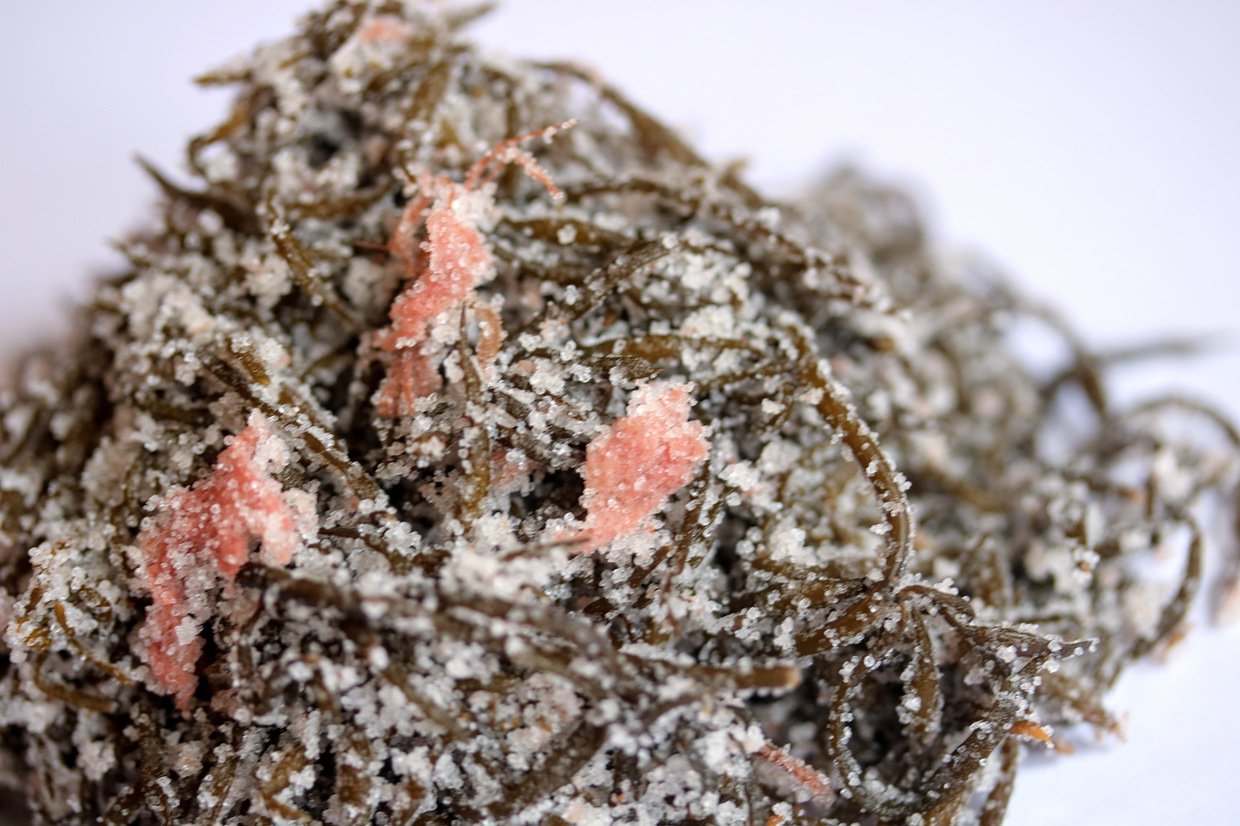
First, salt is needed.
After washing the salt with water, soak in plenty of water for about 4 to 7 minutes.
After adjusting to your favorite salty taste, please enjoy the cherry blossoms together.

This photo shows Sakura Hijiki after the desalting process.


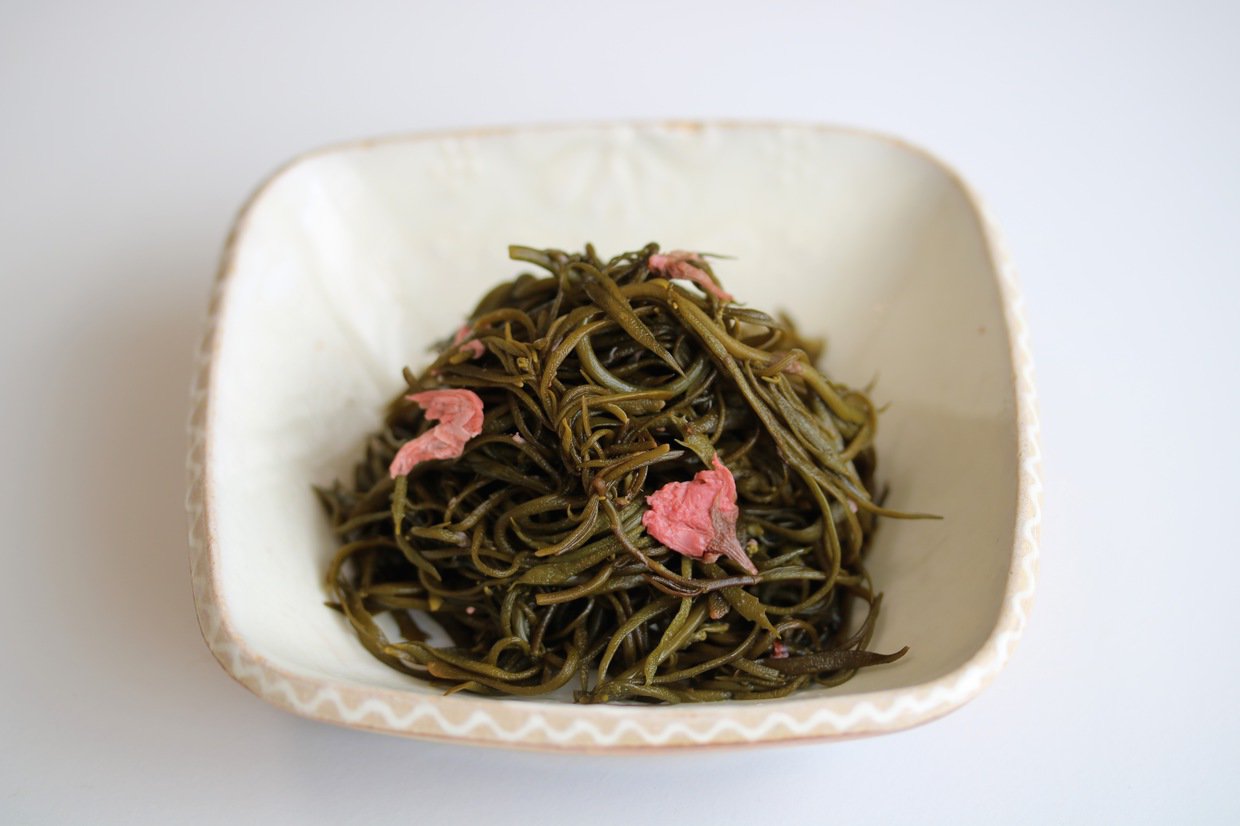
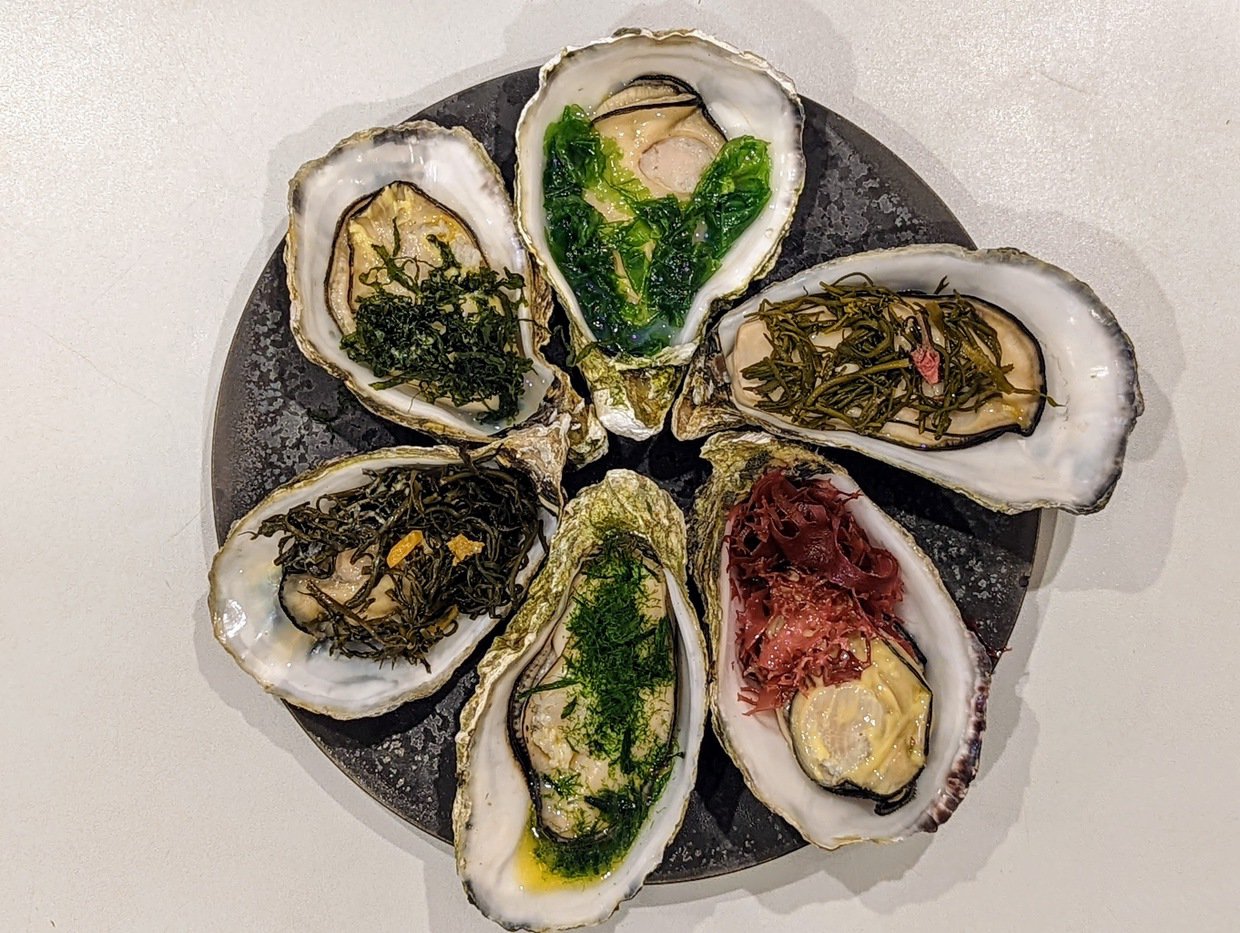
Read this article for more information: Eating steamed oyster butter with 6 types of seaweed
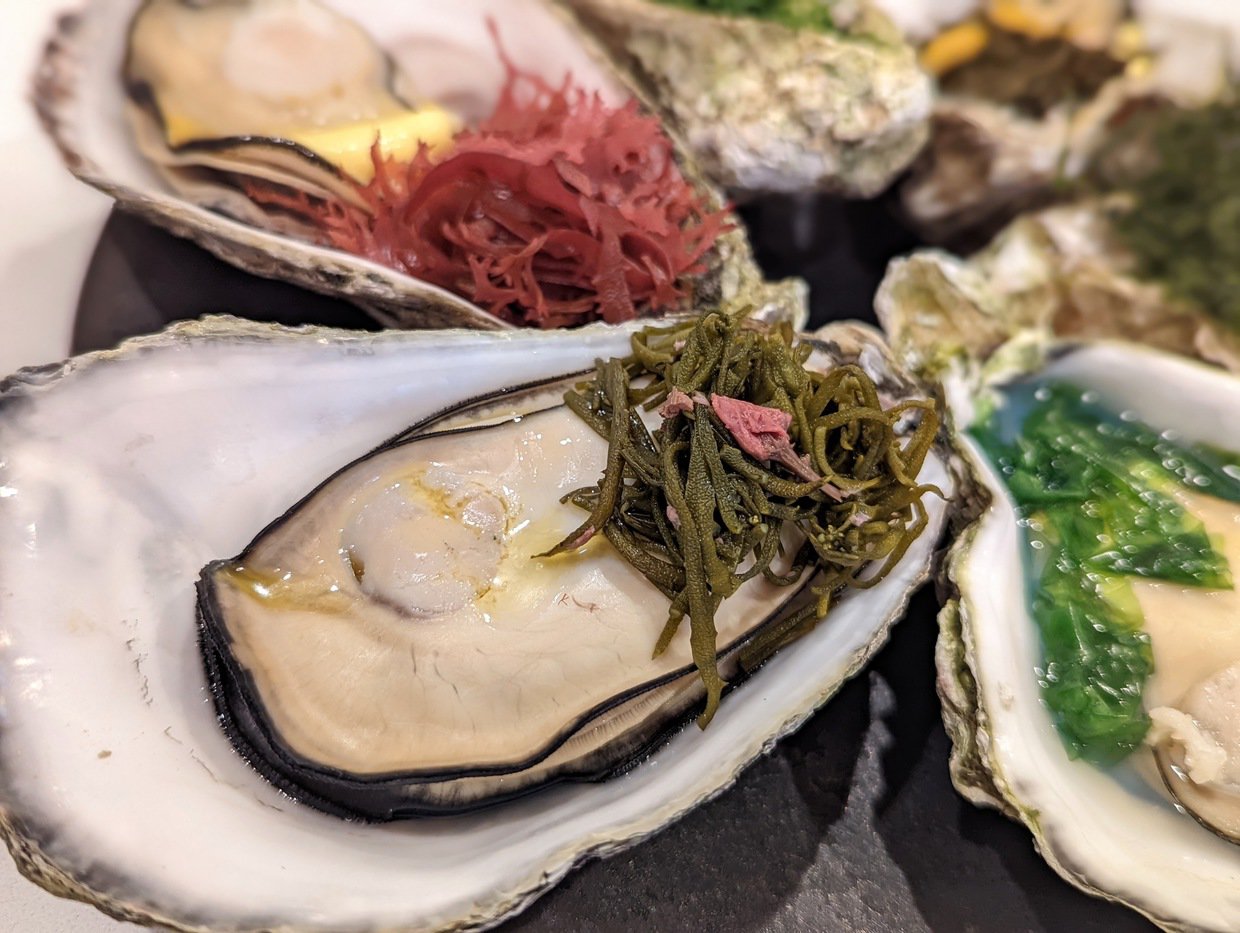
[Young Hijiki Sakura, butter and steamed oysters]
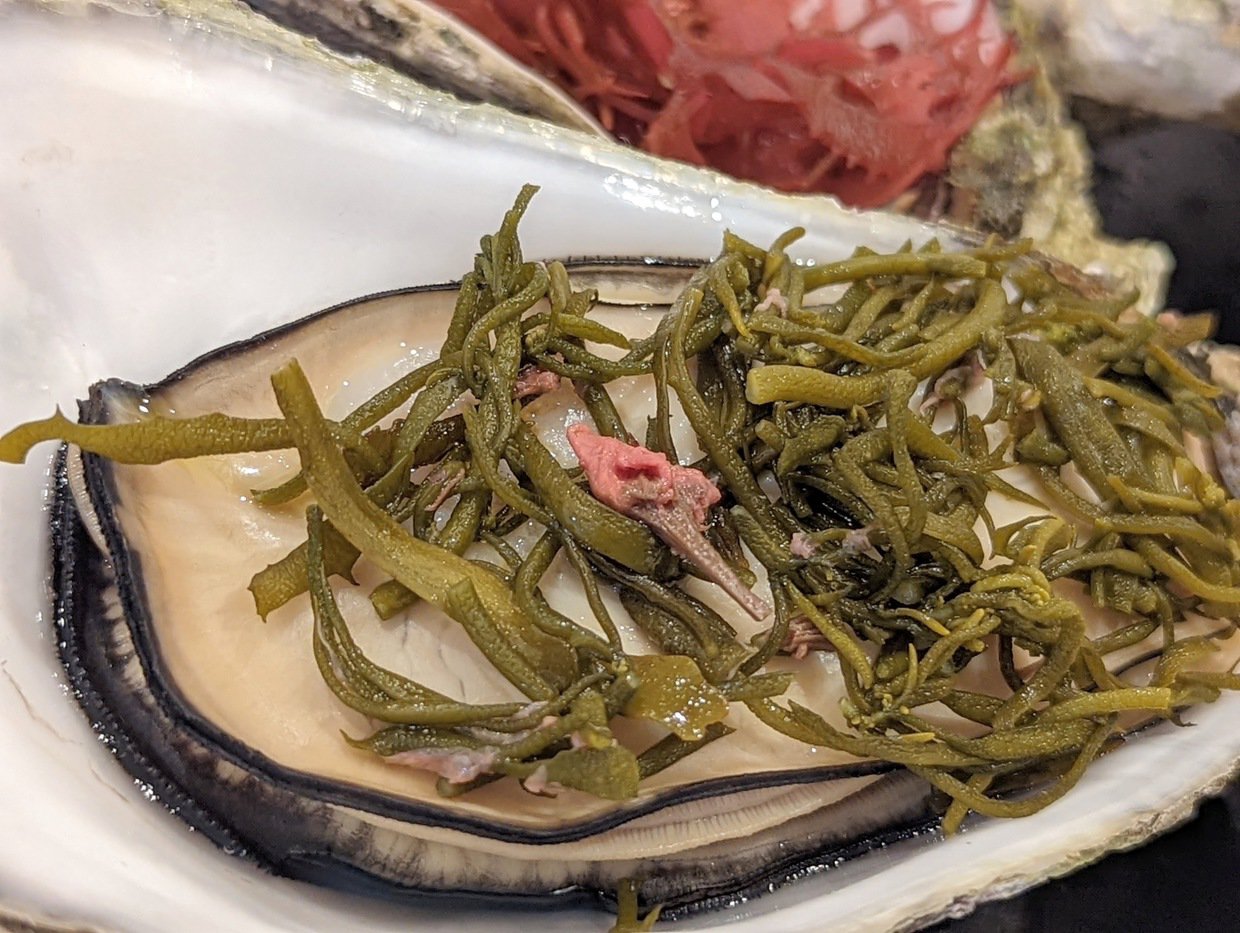
You can experience the new way of enjoying oysters with Young Hijiki.
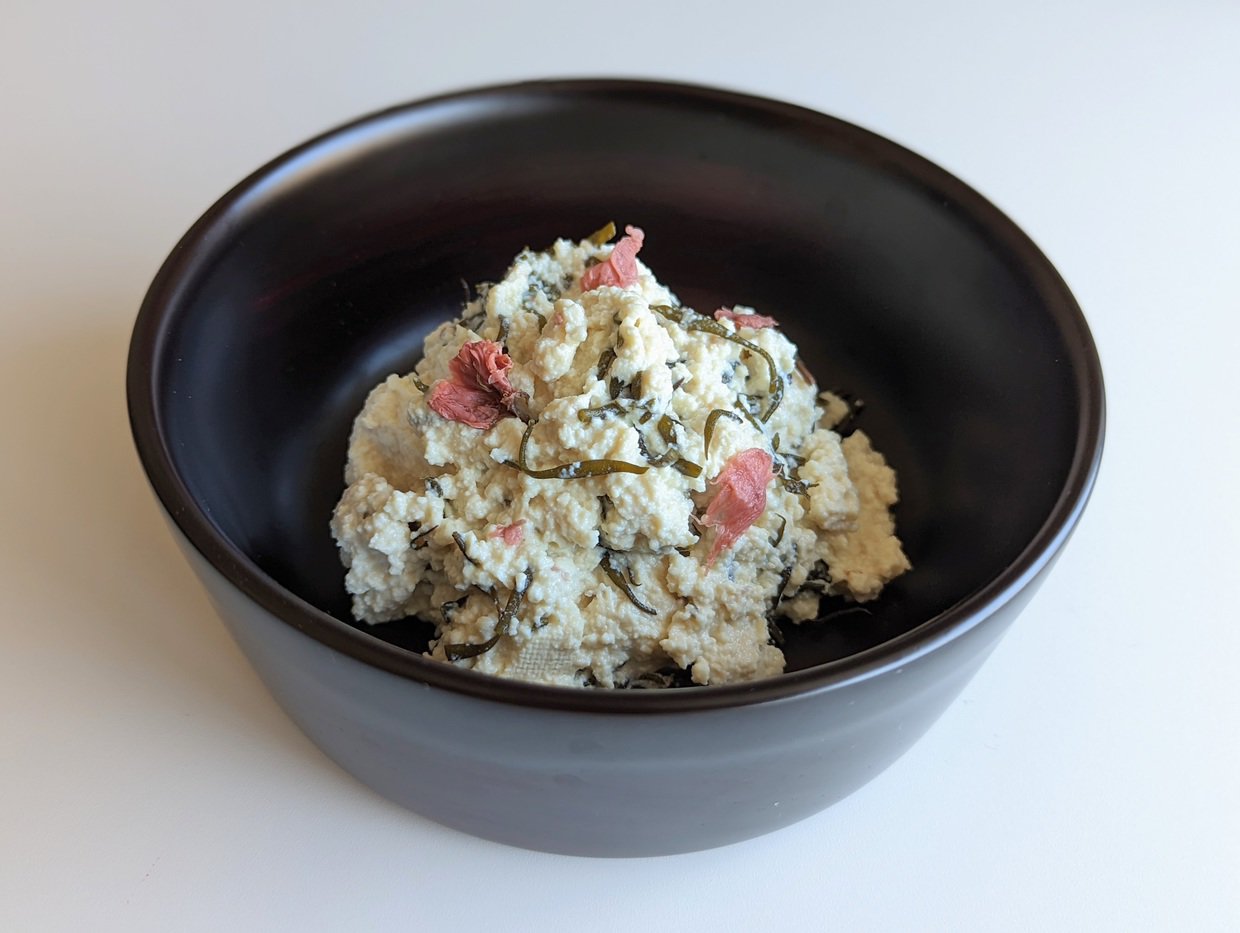
[Young Hijiki cherry blossoms with Shiraae ]

Remove excess water the Momen Tofu 200g and add 30g of white Miso.
Then add 50g of Young Hijiki Sakura and mix! 
[Young Hijiki Sakura Chirashi Sushi for adults]
A simple yet delicious chirashi sushi, decorating with pale on white and pink.
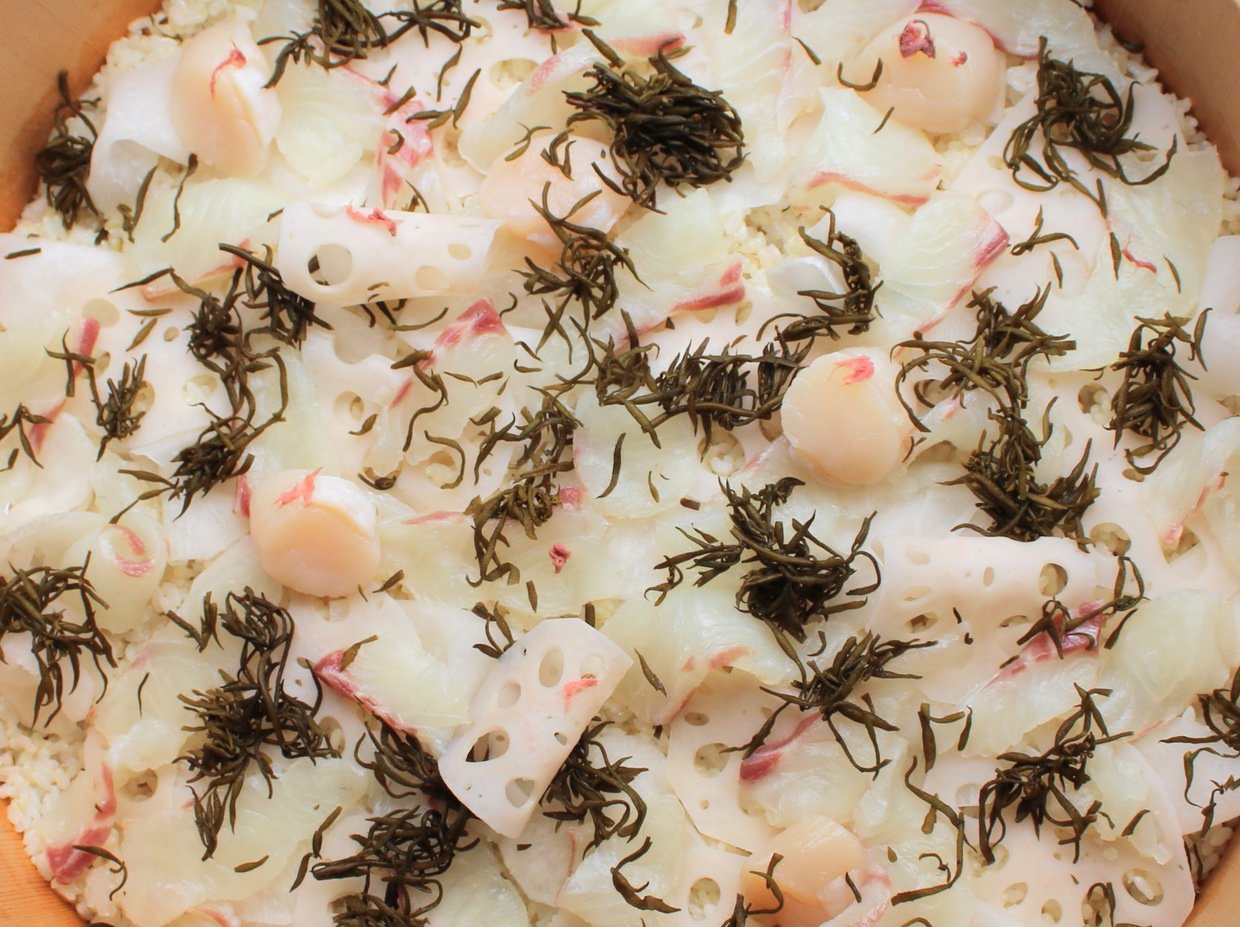
I've topped these ingrefients on top of the sushi rice:
- Thinly sliced and lightly pickled kohlrabi, squeezed tightly
- Sweet vinegar-pickled lotus root
- Slices of sea bream
- Scallops
- Young Hijiki Sakura

*You can use any ingredients you like.
Instead of using a lot of young hijiki, it's better to scatter it moderately. This way, the chirashi sushi won't be overwhelmingly flavored with sakura, but you will get occasional hints of it.

[Young Hijiki Sakura Chirashi Sushi for children]
A colorful and spring-themed chirashi sushi with ingredients kids love, while still offering hints of sakura flavor from the scattered young hijiki.
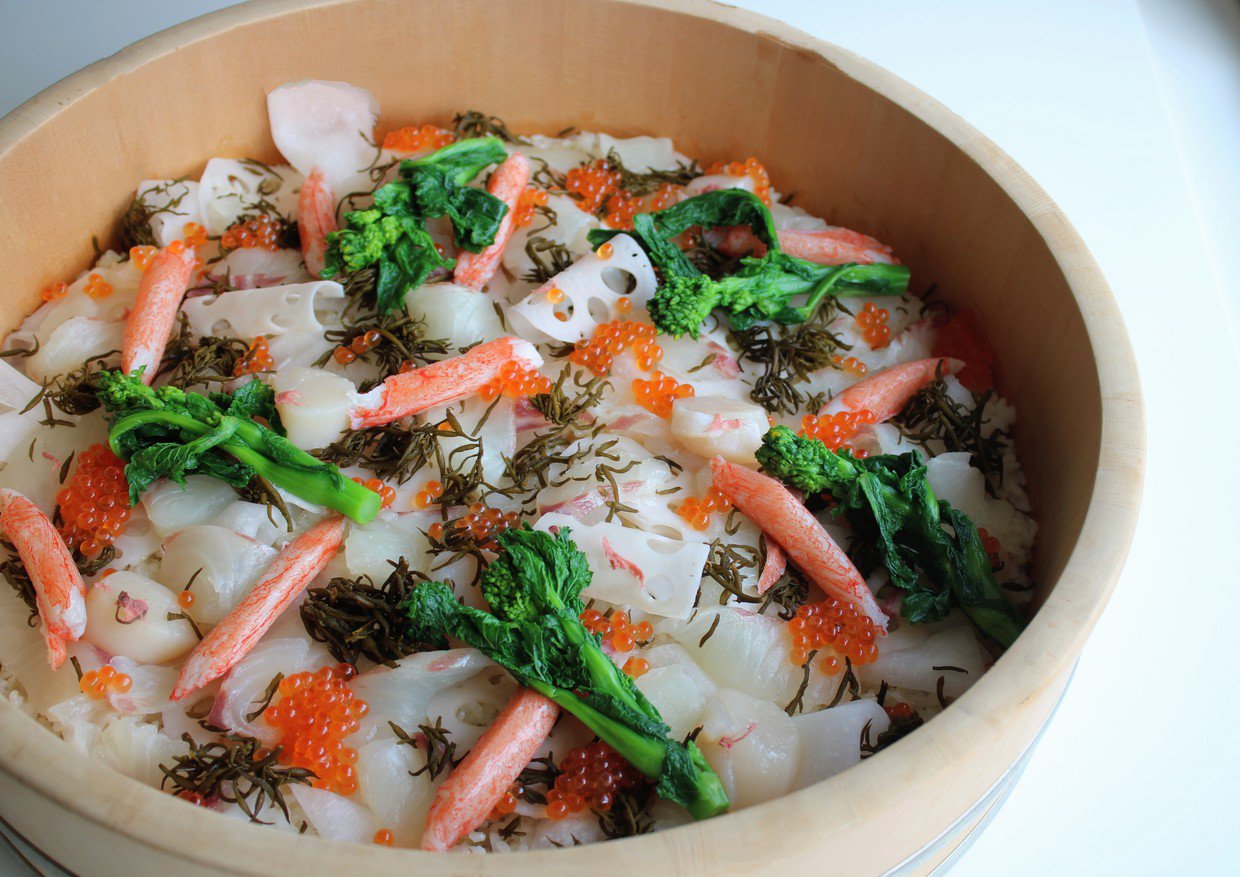

On top of the sushi rice:
- Thinly sliced and lightly pickled kohlrabi, squeezed tightly
- Sweet vinegar-pickled lotus root
- Slices of sea bream
- Scallops
- Crab sticks
- Salmon roe
- Rapeseed blossoms
- Young Hijiki Sakura
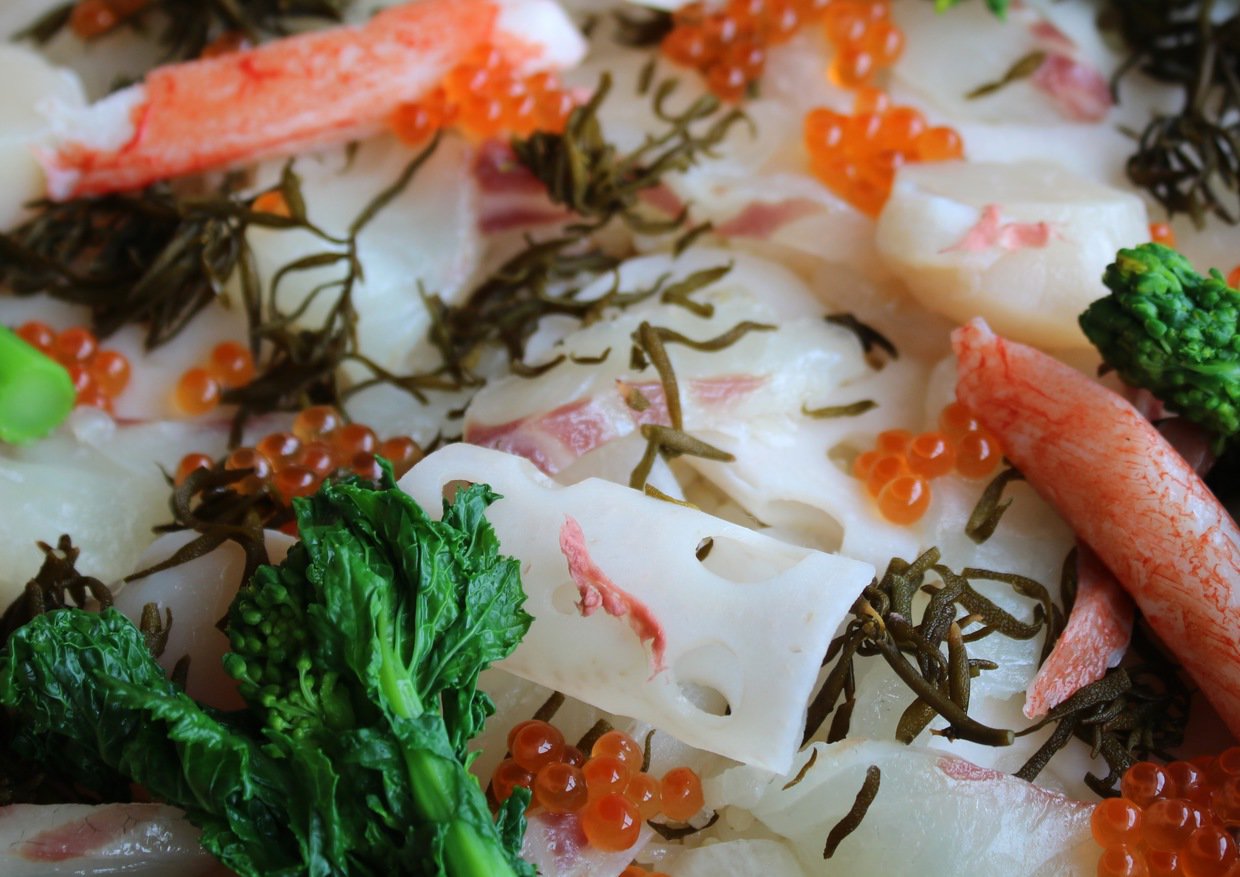

How to Effectively Use Sakura Salt
When you desalt "Young Hijiki Sakura," don't waste the sakura-scented salt (sakura salt) by washing it away. Before adding water to the bowl, roughly shake off the salt from the hijiki. This process will yield a considerable amount of sakura salt.

I sprinkled sakura salt on simple grilled aonori rice crackers from Mochitake. The fragrance was subtle, and it didn't strongly influence the taste. However, depending on the dish or processed product, this sakura salt can be reused. There may be small bits of hijiki mixed in with the sakura salt, but you can easily remove them, or eat them together. For customers who have purchased "Young Hijiki Sakura," knowing about this use can be a helpful tip.
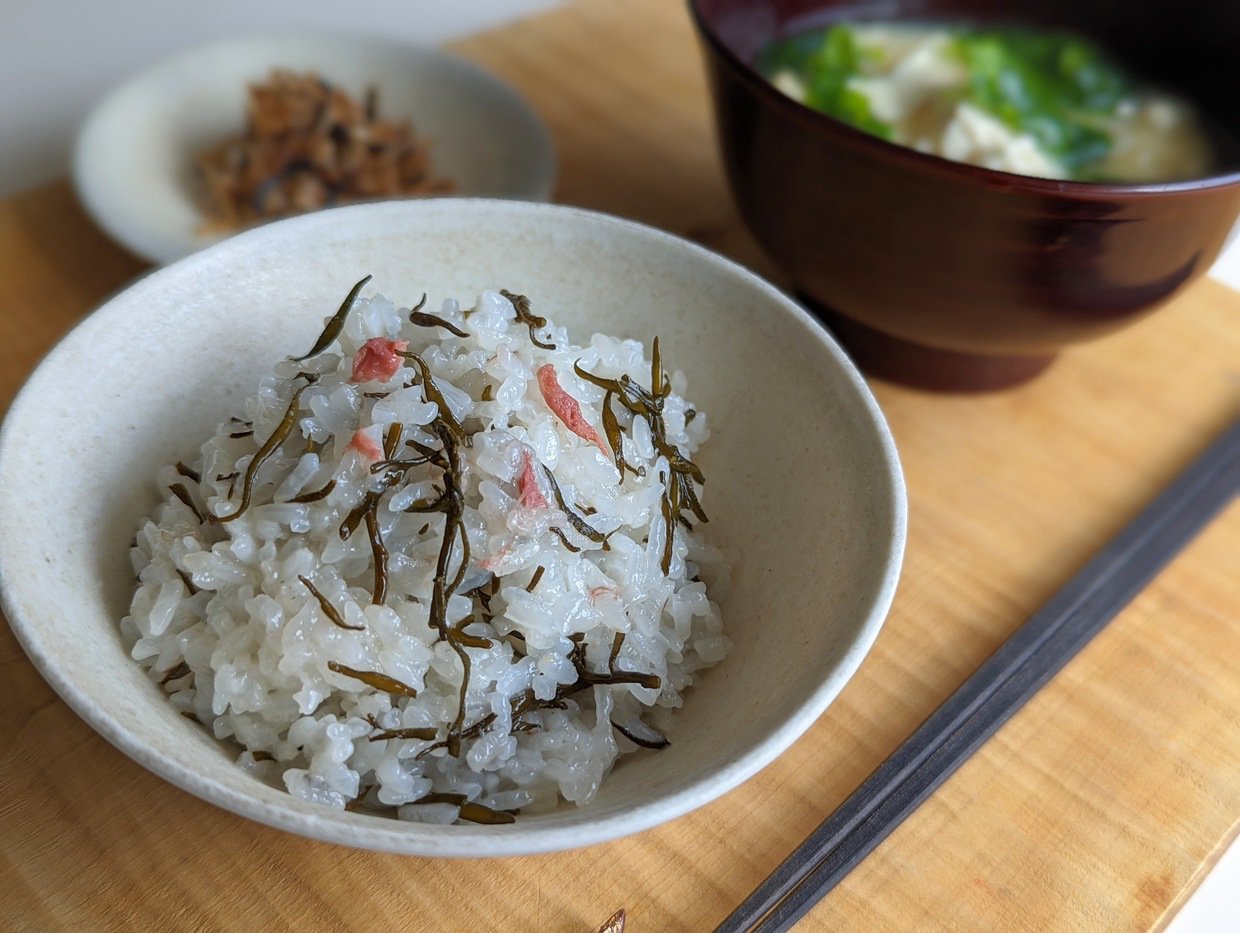
Young Hijiki Sakura Okowa (Sticky Rice)
Easily made with a microwave! I made some arrangements with my mother-in-law’s sakura okowa recipe to include young hijiki sakura.
Glutinous rice
Rice
Wakojiki cherry blossoms
Ingredients:
- Glutinous rice
- Non-glutinous rice
- Young Hijiki Sakura
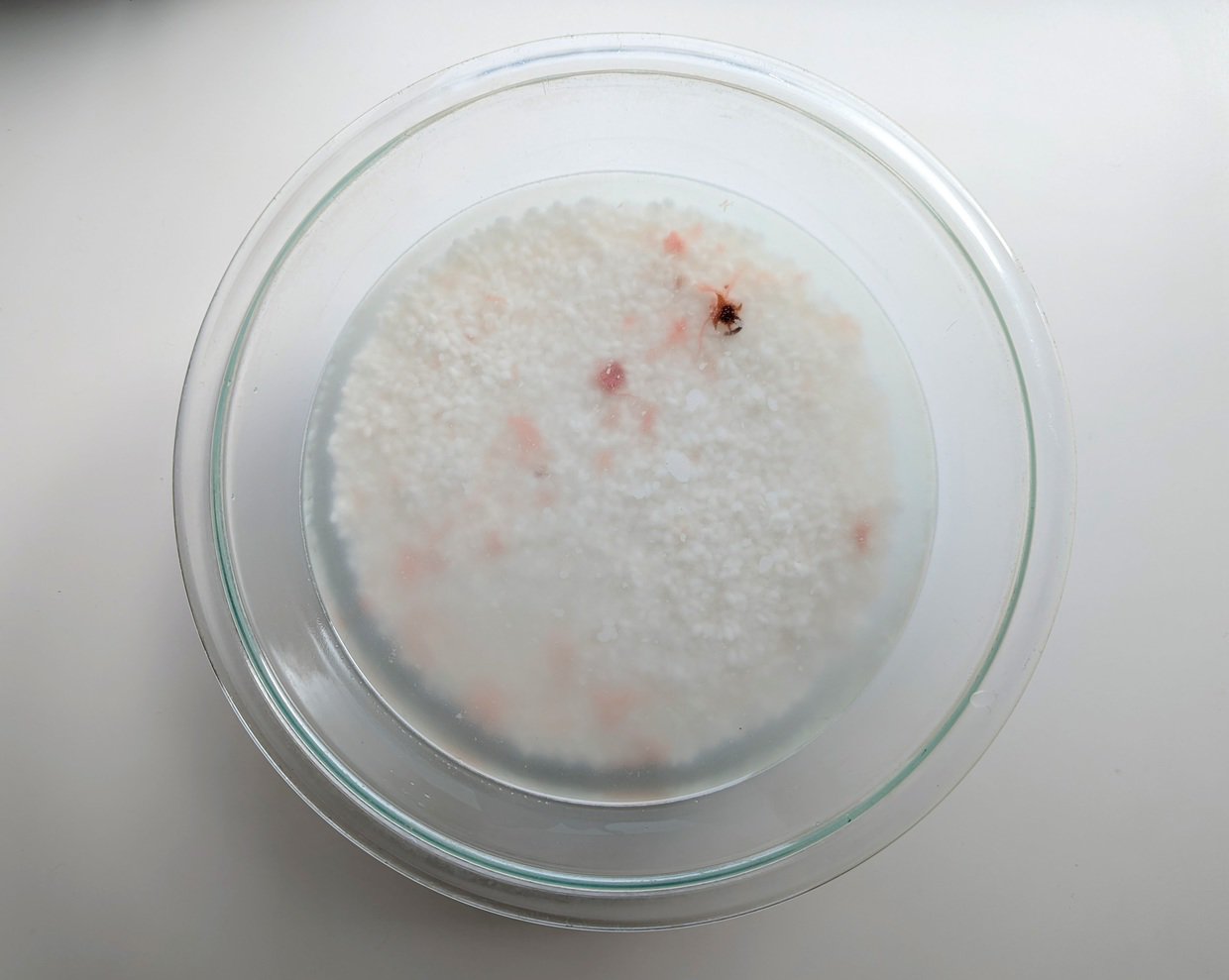
Mochi rice 8: Put the rice 2 in a large heat -resistant ball, wash it quickly and add water to soak the rice firmly.
Put the amount of the cherry blossom cherry blossom petals with salt and soak overnight (about 8 hours) overnight (about 8 hours).
Adjusts the water that was soaked without throwing it away.
Leave the water from the rice in the ball to about 5 mm, and the amount is flushed.
Wrap the heat -resistant ball and place it in the center of the microwave
3 minutes for 800W to 1000W
Take out once, stir the whole, and once again for 3 minutes for 800W to 1000W.
Take it out once, stir the whole, and this time for 5 minutes for 600W
Take out once, stir the whole, and once again for 600W
If you stir the whole and feel that there is still a lot of moisture,
Repeat 1 minute at 600W several times and repeat until the water is gone on the rice surface.
< * Prepare young hijiki while rice is cooked in a microwave oven. >
When you take it out of the bag, the cherry blossoms and hijiki are separately divided.
(It is okay if the fine cherry blossom petals remain on the hijiki side.)
The cherry blossoms are salted
Hijiki takes the salt (cherry -salt) whose scent of cherry blossoms has been transferred by shaking off salt in a small ball.
Rinse only the hijiki with plenty of water for about 3 minutes.
Mix the cooked Okawaki and cherry blossoms and taste it.
If you don't have enough salt, adjust it to your favorite salt.
At that time, please use the cherry salt you mentioned earlier.
Serve in a bowl to complete.
Instructions:
- Mix glutinous rice (80%) and non-glutinous rice (20%) in a large microwave-safe bowl, rinse briefly, and soak in enough water to cover the rice. Add young hijiki sakura petals with salt intact as shown in the picture, and let it soak overnight (about 8 hours).
- Do not discard the soaking water. Adjust the water level, leaving about 5mm above the rice. Drain any excess water.
- Cover the bowl with plastic wrap and place it in the center of the microwave. Heat at 800W-1000W for 3 minutes.
- Remove, stir well, and microwave again at 800W-1000W for another 3 minutes.
- Remove, stir well, and microwave at 600W for 5 minutes.
- Remove, stir well, and microwave again at 600W for another 5 minutes.
- If there’s still excess moisture, continue microwaving at 600W in 1-minute increments until the water is absorbed.
While microwaving, prepare the young hijiki:
- Separate the sakura petals from the hijiki.
- Shake off the sakura-scented salt from the hijiki in a small bowl.
- Desalt the hijiki in plenty of water for about 3 minutes.
- Mix the hijiki and sakura petals into the cooked rice. Taste and adjust the saltiness with the reserved sakura salt if necessary.
- Serve in a dish, and it’s ready to eat!

